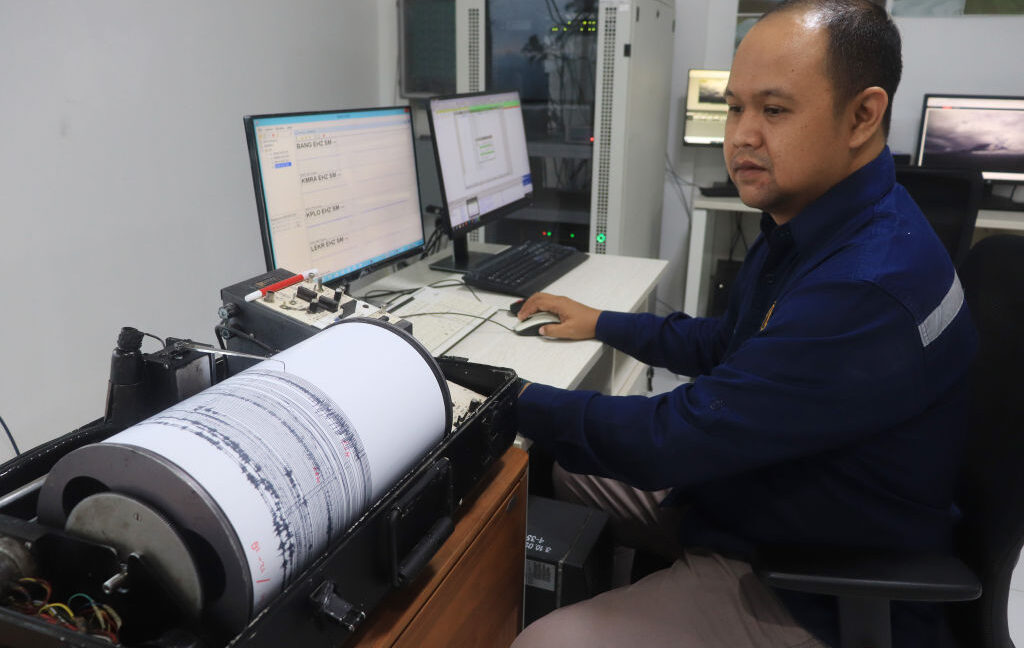Science
Android Phones Evolve into Vital Earthquake Alert System

Android phones have transformed into essential tools for earthquake warnings in seismically active areas, alerting users to nearby seismic activity. Since its launch in the United States in 2020, the Android Earthquake Alert (AEA) system has expanded globally, offering users crucial seconds to seek safety. According to a recent study published in Science, Google has refined this system, detailing its functionality, improvements, and the challenges faced during its initial years of operation.
Harnessing Smartphone Technology
Each Android device is equipped with accelerometers, sensors that detect motion changes. These sensors enable smartphones to track activities such as steps taken while remaining stationary on a table. However, when an earthquake occurs, the accelerometer picks up significant vibrations distinct from everyday movements like a passing truck. Google’s system is designed to differentiate these vibrations to provide timely alerts.
When an earthquake happens, phones near the epicenter detect the shaking first. Although immediate alerts may not benefit those closest to the quake, the system can utilize data from these devices to warn others. As seismic waves travel slower than internet signals, alerts can reach users seconds or even minutes before the waves arrive.
To minimize false alarms, the system relies on the large number of Android devices in use. AEA primarily ignores events that are not detected by multiple phones within a specific area. It also incorporates a model of seismic activity, analyzing patterns of ground motion to ensure alerts are only triggered in response to genuine earthquakes.
How the Alert System Works
The AEA system is integrated into Android software and is enabled by default on most devices. It begins monitoring when the phone is stationary, looking for acceleration data indicative of seismic waves. If a potential quake is detected, the device sends location data to Google servers, which analyze the information to determine if it aligns with expected earthquake patterns.
Once confirmed, the system estimates the earthquake’s magnitude and location, generating alerts for users. Alerts vary in urgency, with “be aware” notifications sent to those further from the epicenter. For individuals in closer proximity, a “take action” alert appears, instructing them to “Protect yourself” or “Drop, cover, and hold on.” Such alerts override do-not-disturb settings, ensuring they reach users promptly. If an alert arrives after the seismic waves, it informs users of the event, providing options for further information.
As of March 2023, the AEA system has issued alerts for a total of 1,279 events, ranging from magnitudes of 1.9 to 7.8, with the most significant earthquake occurring in Türkiye. Since its inception, software updates have improved accuracy, reducing errors in magnitude estimates. Advances in earthquake modeling have accounted for regional differences in geology and construction types.
Speed is crucial in earthquake alerts. For example, a seismic event off the coast of the Philippines in 2023 allowed phones onshore to detect the initial waves just 12 seconds later, with alerts dispatched six seconds after detection. Users in the affected area received up to 15 seconds of warning before experiencing the strongest shaking. In larger earthquakes like that in Türkiye, warnings could be issued over a minute prior to significant tremors.
Approximately one-third of those who could receive alerts reported doing so before the shaking began. Another quarter received notifications during the tremors, while the remaining quarter received alerts immediately after the quake was felt.
Global Reach and Future Potential
Of the 1,300 events that triggered alerts, only three were classified as false positives. One incident stemmed from an unrelated system’s alert causing widespread phone vibrations, while the other two resulted from thunderstorms generating vibrations similar to those of an earthquake. These instances led to improvements in the system’s ability to filter out non-seismic events.
While many countries previously established alert systems using seismographic data, AEA has broadened its reach to include 98 countries, with approximately 2.5 billion people now able to access these alerts. The system averages around 60 alerts per month, with approximately 18 million people receiving notifications each month, showcasing its significance in disaster preparedness.
As a pioneering integration of smartphone technology into public safety measures, the AEA system exemplifies the potential of existing technology to enhance community resilience. With continued improvements and widespread adoption, it is poised to remain a vital resource for millions.
-

 Politics4 weeks ago
Politics4 weeks agoSecwepemc First Nation Seeks Aboriginal Title Over Kamloops Area
-

 World5 months ago
World5 months agoScientists Unearth Ancient Antarctic Ice to Unlock Climate Secrets
-

 Entertainment5 months ago
Entertainment5 months agoTrump and McCormick to Announce $70 Billion Energy Investments
-

 Science5 months ago
Science5 months agoFour Astronauts Return to Earth After International Space Station Mission
-

 Lifestyle5 months ago
Lifestyle5 months agoTransLink Launches Food Truck Program to Boost Revenue in Vancouver
-

 Technology3 months ago
Technology3 months agoApple Notes Enhances Functionality with Markdown Support in macOS 26
-

 Lifestyle3 months ago
Lifestyle3 months agoManitoba’s Burger Champion Shines Again Amid Dining Innovations
-

 Top Stories2 months ago
Top Stories2 months agoUrgent Update: Fatal Crash on Highway 99 Claims Life of Pitt Meadows Man
-

 Politics4 months ago
Politics4 months agoUkrainian Tennis Star Elina Svitolina Faces Death Threats Online
-

 Sports5 months ago
Sports5 months agoSearch Underway for Missing Hunter Amid Hokkaido Bear Emergency
-

 Politics5 months ago
Politics5 months agoCarney Engages First Nations Leaders at Development Law Summit
-

 Technology5 months ago
Technology5 months agoFrosthaven Launches Early Access on July 31, 2025





















